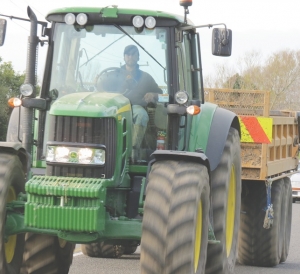New rules applied from June 1 and more come into force this month.
“However, not all the proposed changes will be in place until late 2014,” Rural Contractors NZ president Steve Levet. “It can be quite confusing at the moment with some of the old regulations still applying; so there is a mix of old and new at present.”
One important change now in force is to how tractors are registered. A two-tier system applies, based on a 40km/h operating speed. Vehicles operating below this speed need comply only by being roadworthy.
“Tractor owners have to decide if they want to register their tractors as being able to travel at over 40km/h on public roads or not,” Levet explains. “If you opt for the former, then in effect your vehicle has to comply with rules and regulations which apply to other road legal vehicles and require the new simplified annual warrant of fitness for tractors.”
Previously some heavier tractors needed a certificate of fitness, whereas now they need only a simplified WoF tailored for tractors.
And a new licence endorsement now allows for a greater range of agricultural vehicles to be driven by the holder of a class 1 (car) licence with the necessary skills.
“Drivers will need a wheels endorsement on their driver’s licence if driving a tractor over 40km/h or any other powered agricultural vehicle under 40km/h,” Levet says
Other changes have improved and simplified the rules on pilot vehicles, work time variation schemes, hazard identification and vehicle visibility.
From November 11 agricultural motor vehicles, regardless of age, that travel faster than 40km/h will undergo an annual WoF inspection, rather than six monthly.
Changes to the registration classes for agricultural vehicles, exemptions for special vehicles and the application of RUC are matters to be finalised in mid-2014.
Levet says despite some confusion, rural contractors welcome the changes and the thinking behind them. Greater flexibility over work hours is particularly welcome.
“Contractors and farmers will no longer face the situation of a contractor having to stop work because they have exceeded their work hours for the day, when perhaps the job could be completed in another hour. The contractor will no longer have to come back the next day or the next day when the weather is suitable.”
www.ruralcontractors.org.nz

















